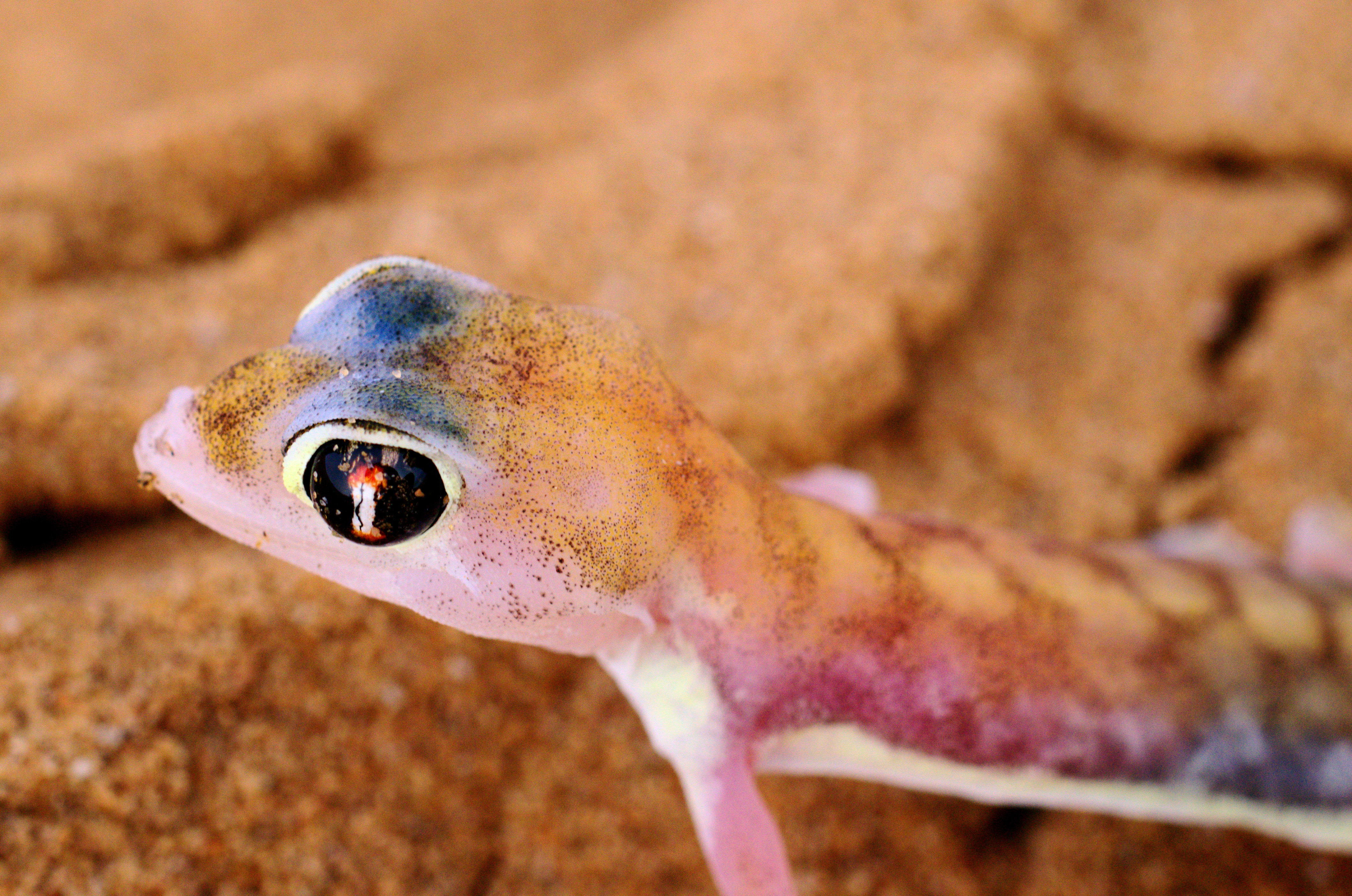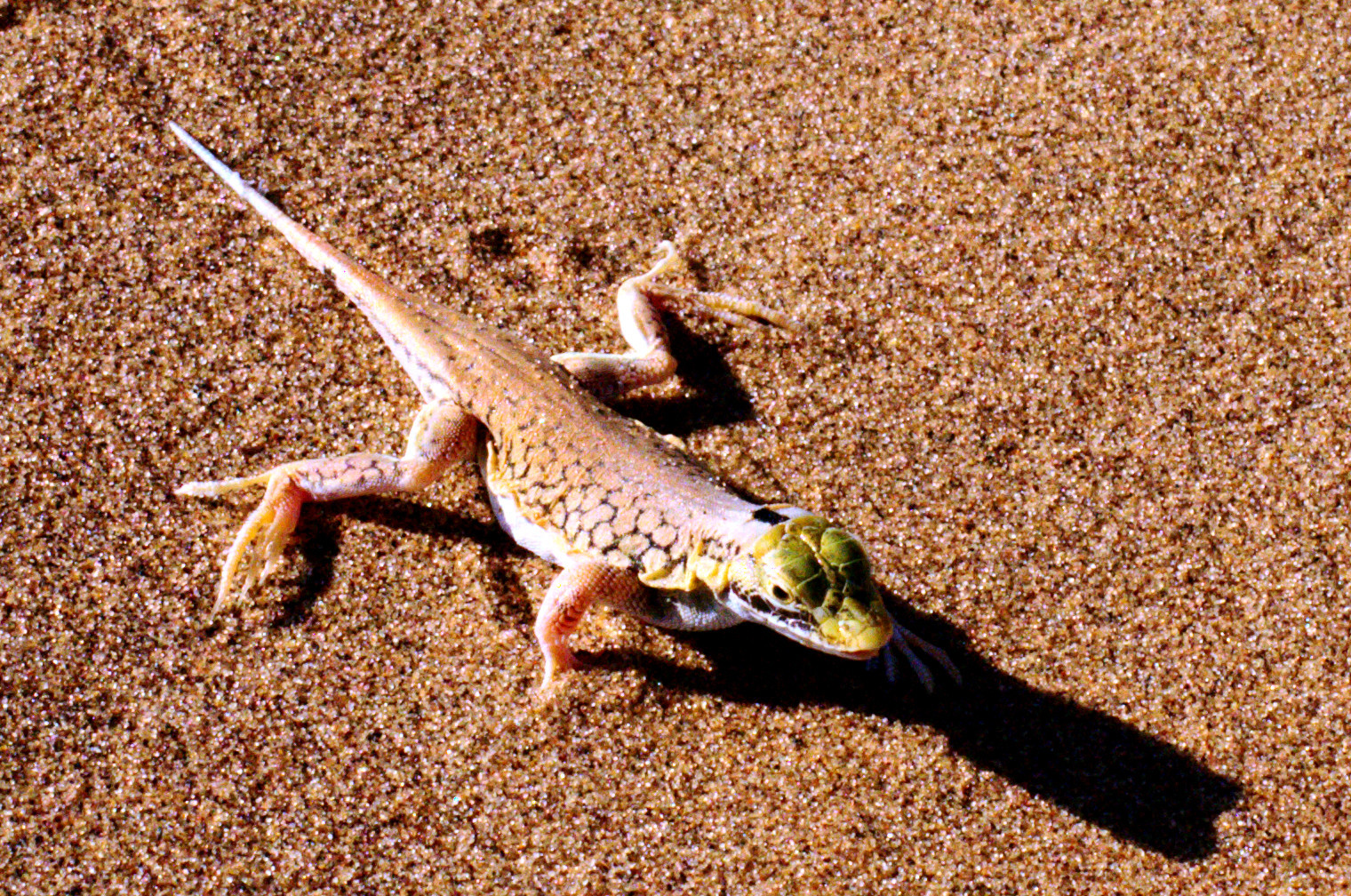Namibia, a land of stark beauty and sweeping desert landscapes, is home to some of the most fascinating creatures on Earth. While the towering dunes and dramatic coastlines often steal the spotlight, a closer look reveals a hidden world of smaller, equally captivating inhabitants. Among these desert dwellers, lizards stand out for their incredible adaptations and unique behaviors. Let’s delve into the world of Namibian lizards, focusing on one particularly intriguing species: the “Dancing Lizard.”
The Nocturnal Namib Dune Gecko
One of the first remarkable lizards you might encounter (if you’re out at the right time) is the Namib Dune Gecko, scientifically known as Pachydactylus rangei. These geckos are masters of the night, perfectly adapted to the harsh desert environment. During the scorching days, they cleverly burrow into the cool sand to escape the heat.
 Namib Dune Gecko (Pachydactylus rangei), a nocturnal lizard found in the Namib Desert.
Namib Dune Gecko (Pachydactylus rangei), a nocturnal lizard found in the Namib Desert.
These nocturnal habits make them elusive during the day, but as darkness falls, they emerge to hunt. Their feet are specially designed for navigating the dunes. Equipped with webbed toes and adhesive pads covered in tiny filaments, Namib Dune Geckos can effortlessly scurry across the sand. This specialized foot structure allows them to move with surprising speed, even outpacing humans on the dunes.
 Close-up of Namib Dune Gecko showcasing its translucent skin and webbed feet, adaptations for desert life.
Close-up of Namib Dune Gecko showcasing its translucent skin and webbed feet, adaptations for desert life.
Hunting under the desert stars, these geckos have evolved exceptional eyesight. Their large, lidless eyes are covered with transparent scales that act like permanent contact lenses. To keep these lenses clean and moist in the dry desert air, they possess long tongues for licking away any dust or sand. Their diet consists of whatever small invertebrates they can find roaming at night, including crickets, spiders, beetles, and ants. Adding to their unique charm, Namib Dune Geckos have thin, almost see-through skin adorned with varied patterns, and some even sport a stylish blue band between their eyes. While generally solitary creatures, they can communicate with squeaks, clicks, or croaks, especially when disturbed or during mating season in April and May.
The Legless FitzSimons’ Burrowing Skink
Another fascinating lizard in Namibia challenges our typical lizard image. Meet FitzSimons’ Burrowing Skink, or Typhlacontias brevipes. This creature looks more like a snake than a lizard at first glance, as it completely lacks legs. Like other skinks, it also has no discernible neck, further blurring the lines.
The question then arises: how do we differentiate it from a snake? While the absence of legs might suggest snake classification, there are key differences. As highlighted in articles discussing snake and legless lizard distinctions, legless lizards generally lack forked tongues (though some lizards do have them), and most lizards possess eyelids (unlike snakes). However, nature loves exceptions, as seen with the lidless eyes of the Namib Dune Gecko. Lizards usually have external ear holes, which snakes lack, but again, exceptions exist. Biology, as we discover, is full of intriguing complexities.
This “legless lizard” is a surprising swimmer – not in water, but in sand! FitzSimons’ Burrowing Skink navigates the sand dunes at night, hunting for beetles, ants, and termites beneath the surface.
The Thermal Dancing Lizard: Master of Desert Adaptation
Finally, we arrive at the star of our show, the “dancing lizard,” scientifically known as Meroles anchietae. Also called the Shovel-Snouted Lizard or Sand Diving Lizard, this reptile is a true daytime desert specialist and a master sand digger. If threatened, it can vanish under the sand in mere seconds, a vital skill for survival in the exposed desert environment.
 Shovel-Snouted Lizard, also known as the dancing lizard, expertly digs into the sand for thermoregulation and safety in the Namib Desert.
Shovel-Snouted Lizard, also known as the dancing lizard, expertly digs into the sand for thermoregulation and safety in the Namib Desert.
The Meroles anchietae is exceptionally well-adapted to desert life. One remarkable adaptation is its ability to store water – internally. This “water bottle” in its stomach is a crucial advantage in the arid desert, ensuring hydration without hindering its digging abilities.
But what truly earns it the name “dancing lizard” is its fascinating behavior on the scorching sand. To avoid burning its feet on the intensely hot surface, the lizard performs a “thermal dance.” It alternately lifts two legs at a time, minimizing contact with the hot sand and creating the appearance of dancing. This behavior is a stunning example of adaptation to extreme temperatures and has been captured in numerous videos, showcasing the ingenuity of desert wildlife.
Namibia’s Lizard Diversity
From the nocturnal Namib Dune Gecko to the legless Burrowing Skink and the dancing Shovel-Snouted Lizard, Namibia’s lizard fauna is remarkably diverse and uniquely adapted to the desert environment. These reptiles, often overlooked in favor of larger desert animals, reveal a fascinating world of survival strategies and specialized behaviors. Exploring the world of Namibian lizards offers a captivating glimpse into the resilience of life in even the harshest conditions.

